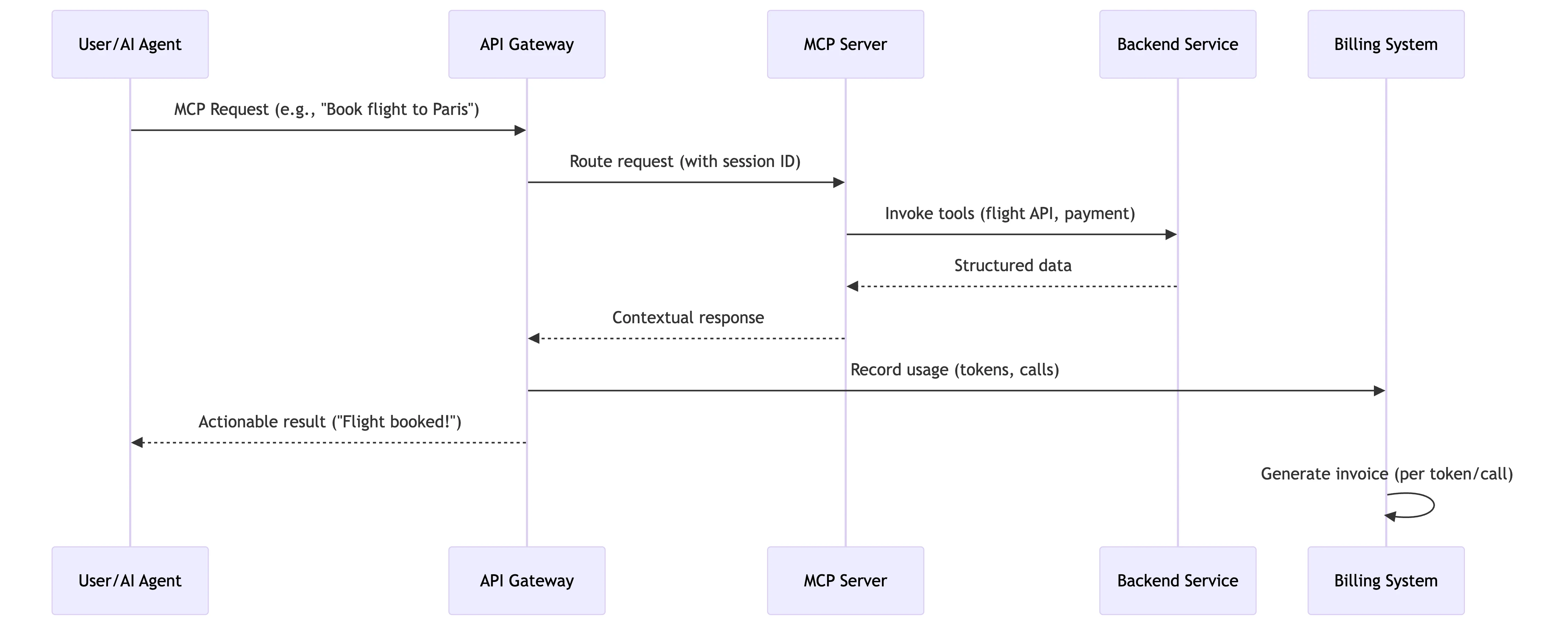Artificial Intelligence (AI) has become the backbone of modern innovation, driving advancements across industries and reshaping the global economy. At the center of this transformation lies MCP (Model Context Protocol), a framework for contextualizing, managing, and delivering AI/ML models. MCP enables seamless integration of AI into real-world applications, making it a pivotal tool for monetizing AI in today's competitive landscape.
In this blog, we'll dive deep into MCP monetization strategies, explore the role of API gateways, and demonstrate how Apache APISIX empowers developers to maximize their AI model's potential. By the end, you'll have actionable insights to navigate the AI economy and unlock new revenue streams.
What Is MCP and Why Is It Important for AI Monetization?
Defining MCP
MCP is a protocol that provides the necessary context for AI/ML models to operate effectively in production environments. It ensures that AI models:
- Understand and adapt to their deployment context (e.g., region, user preferences).
- Operate efficiently across diverse environments.
- Provide reliable outputs tailored to specific use cases.
In essence, MCP bridges the gap between raw AI/ML models and real-world applications, enabling seamless scaling, deployment, and monetization.
The Role of API Gateways
API gateways, such as Apache APISIX, serve as the critical infrastructure for exposing AI/ML models as APIs. They:
- Enable secure access to MCP-driven AI services.
- Manage API traffic to ensure scalability and performance.
- Provide observability and monitoring for AI/ML APIs in production.
By combining MCP with an API gateway, developers can efficiently monetize their AI models while ensuring a seamless user experience.
The Connections between API Gateways and MCP
API gateways are evolving into AI monetization control planes, while MCP provides the contextual layer that transforms static data into actionable intelligence. Together, they enable:
Scalable AI Products: Usage-based pricing aligned with token economics.
Ecosystem Growth: MCP directories (e.g., Anthropic's 200+ tools) create API marketplaces 38.
Enterprise Efficiency: Companies cut AI integration costs via MCP gateways.
The future lies in hybrid architectures where APIs and MCP coexist—APIs as the backbone of system connectivity, and MCP as the AI-native orchestrator driving the next wave of AI economy.
The Growing AI Economy
What Is the AI Economy?
The AI economy encompasses the ecosystem of technologies, applications, and businesses built around AI/ML models.
Key Drivers of the AI Economy
- AI Democratization: Open-source frameworks like TensorFlow and PyTorch lower barriers to entry.
- Demand for Automation: Industries increasingly rely on AI to automate workflows and reduce costs.
- Cloud-Native AI Services: Platforms like AWS and Azure provide scalable AI model deployment infrastructure.
Challenges
Despite its growth, monetizing AI comes with challenges:
- High Operational Costs: Training and deploying AI models require significant resources.
- Data Privacy Concerns: Complying with regulations like GDPR and CCPA.
- Scalability Issues: Ensuring performance under varying workloads.
How API Gateways Empower MCP Monetization
API gateways play a pivotal role in enabling and optimizing the monetization of MCP-driven AI models. By acting as intermediaries between AI models and end-users, API gateways provide the infrastructure required to expose, secure, and manage AI services efficiently. Here's how API gateways, such as Apache APISIX, empower MCP monetization:

1. Simplified API Exposure
API gateways allow developers to expose AI/ML models as APIs, making them easily consumable by applications and end-users. Without an API gateway, managing direct connections to AI models becomes complex, especially as the number of services scales. With Apache APISIX, developers can:
- Create APIs for MCP-driven models in minutes.
- Dynamically route requests to the appropriate model or service based on context.
By simplifying API exposure, gateways reduce time-to-market for monetized AI models.
2. Dynamic Context Management
MCP relies on contextual information (such as geographic location, user preferences, or application type) to deliver tailored AI results. API gateways enhance this functionality by:
- Dynamic Routing: Routing requests to models based on contextual metadata (e.g., region-specific AI models or versions).
- Context Injection: Enriching requests with additional information required for MCP to process outputs effectively.
This ensures the AI model delivers the most relevant and accurate results, boosting customer satisfaction and monetization potential.
3. Ensuring Scalability and Performance
One of the most critical aspects of monetizing MCP is ensuring that APIs can handle varying traffic loads without degrading performance. API gateways enable scalability through:
- Load Balancing: Distributing traffic across multiple instances of AI models or API servers to prevent bottlenecks.
- Edge Computing: Deploying AI models closer to users to minimize latency and improve response times.
For example, a sentiment analysis API experiencing a surge in traffic can leverage Apache APISIX's dynamic load balancing to distribute requests across different regional servers, ensuring uninterrupted performance.

4. Security for Monetized APIs
Monetizing MCP requires robust security measures to protect APIs, customer data, and intellectual property. API gateways provide essential security features such as:
- Authentication and Authorization: Verifying user access through API keys, OAuth, or JWT (JSON Web Tokens).
- Rate Limiting: Preventing abuse by limiting the number of requests per user or application.
- Data Encryption: Ensuring secure communication between clients and the API using HTTPS and TLS.
These features help developers build trust with customers and comply with data privacy regulations like GDPR and CCPA.
5. Observability for Monetized Services
To ensure the success of monetized AI/ML APIs, developers need real-time insights into API usage and performance. API gateways provide powerful observability tools, including:
- Traffic Analytics: Monitoring request rates, latencies, and error rates.
- Custom Metrics: Tracking key metrics such as revenue per API call or user engagement.
- Logging and Debugging: Capturing detailed logs for troubleshooting and optimization.
With these capabilities, developers can identify performance bottlenecks, optimize resource allocation, and improve the overall user experience.
6. Extensibility with Plugins
API gateways offer a plugin ecosystem that enables developers to extend functionality and automate workflows. For MCP monetization, plugins can:
- Automate model versioning and rollbacks.
- Integrate APIs with payment gateways for billing and subscription management.
- Enable custom workflows for specific use cases, such as pre-processing requests or caching responses.
This flexibility empowers developers to adapt their monetization strategies to evolving business needs.
Conclusion
Monetizing MCP-driven AI models is essential for thriving in today's AI economy. By leveraging strategies like API-based monetization, marketplace integration, and value-added services, developers can unlock significant revenue potential.
API gateways like Apache APISIX serves as a cornerstone for this journey, providing the tools needed to manage, secure, and scale MCP-driven APIs effectively. Whether you're a developer, an enterprise, or an innovator, embracing MCP and API gateways is key to navigating the AI economy.
